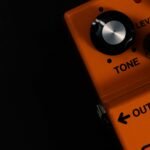The standard tuning for the six-string guitar, EADGBE, is familiar to guitarists worldwide. While its origins are somewhat murky, this tuning has been the foundation of guitar music for centuries. Understanding its history and the reasoning behind its configuration provides valuable insight into the development and versatility of the guitar.
#### Historical Origins of EADGBE
The history of EADGBE tuning is intertwined with the evolution of the guitar and its predecessors. The tuning can be traced back to the Renaissance period, where the lute, a predecessor of the modern guitar, used a variety of tunings. By the Baroque period, the tuning systems began to standardize somewhat, and the five-course guitar (an early form of the instrument with ten strings in five pairs) typically used a tuning similar to modern standard tuning.
The transition to the six-string guitar in the 18th century brought about the EADGBE tuning we recognize today. The primary reason for this tuning was to balance playability with musical versatility. The intervals between the strings (mostly fourths, with a major third between the G and B strings) make a wide range of chords and scales accessible, facilitating both melodic and harmonic playing.
#### Why EADGBE Instead of All Fourths?
One might wonder why the guitar isn’t tuned in perfect fourths, like the bass guitar (tuned EADG). The major third interval between the G and B strings in EADGBE tuning serves several purposes:
1. **Chord Voicing and Ease of Playing:**
– The major third interval allows for more comfortable and varied chord shapes. Standard chords like the C major and G major, which are fundamental to many pieces of music, would be more complex and less ergonomic to play if the guitar were tuned in perfect fourths.
2. **Melodic and Harmonic Flexibility:**
– The combination of fourths and a major third allows guitarists to reach notes in a more compact hand position. This setup is ideal for playing scales, arpeggios, and melodic lines, enabling smooth transitions and minimizing finger movement across the fretboard.
3. **Historical and Cultural Development:**
– The tuning evolved alongside musical styles and the technical demands of the music being composed. The standard EADGBE tuning provided a practical solution for the music of the time, and it has remained due to its effectiveness and the vast repertoire written for it.
#### Practical Implications of EADGBE Tuning
EADGBE tuning offers a balanced approach that accommodates both chords and single-note runs, making it versatile for various musical genres, from classical to rock. It facilitates common chord shapes and scale patterns, enabling players to switch between rhythm and lead playing seamlessly.
– **Chords:**
Chord shapes are generally more straightforward to form and remember. The inclusion of the major third interval simplifies the construction of major, minor, and seventh chords.
– **Scales and Arpeggios:**
The tuning allows for efficient scale fingerings and arpeggio patterns. Guitarists can easily navigate scales horizontally across the neck and vertically within positions.
#### Conclusion
The EADGBE tuning has stood the test of time due to its practicality and musical flexibility. While an all-fourths tuning like EADGCF could theoretically offer some advantages in terms of uniformity, it would complicate chord shapes and fingerings that guitarists have relied on for centuries. The balance achieved by the EADGBE tuning makes it an enduring choice, facilitating a wide range of musical expression and technical execution.
For further reading on the history and theory behind guitar tunings, you can explore resources such as [Guitar World](https://www.guitarworld.com/) and [Premier Guitar](https://www.premierguitar.com/).









